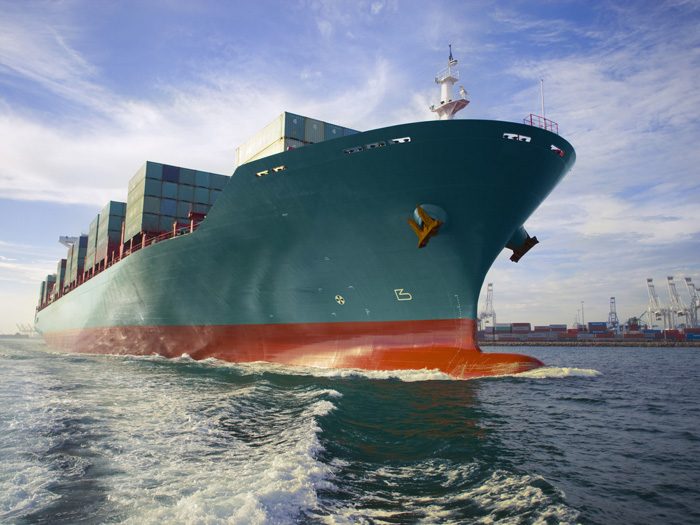Report: Global Trade Growth Set to Contract by 2.3% in Worst Case Scenario

A new report from Atradius Trade Credit Insurance Inc. has some alarming news about the impact — and potential impact — of the ongoing trade dispute between the U.S. and China. The escalating tariffs and growing uncertainty are already negatively impacting trade, both bilaterally and globally.
So far, in 2019, U.S. exports to China have decreased by 30% year-on-year, with Chinese exports to the U.S. decreasing by 9%. Such impacts are expected to continue, and a further escalation could be disastrous, with a worst-case-scenario global trade contraction of 2.3%.
There is hope that President Trump and President Xi may come to some sort of agreement at the upcoming G-20 summit in Japan on June 28 and 29, but that is far from certain and would be unlikely to address tariffs already in place.
The trade war began in April 2018, when U.S.-imposed tariffs on all steel and aluminum imports were met with Chinese tariffs of up to 25% on 128 U.S. products.
Several rounds of retaliatory tariffs followed, most recently in May 2019, with the U.S. imposing tariffs on $250B of Chinese goods, and China imposing tariffs on $110B of U.S. goods — impacting 1.8% of total world trade.
Both countries have threatened to expand tariffs to all imports from the other country, which would more than double the percentage of total world trade directly affected by the tariffs from 1.8 to 3.7%. Amid the dispute, world trade growth slowed in 2019Q1, and the report forecasts trade growth will slow to 2.0% in 2019 before recovering slightly to 2.8% in 2020.
But that is if the dispute does not escalate, which remains a significant risk.
Resiliency and Adjustments
With U.S. exports to China declining by 30%, more than three times the 9% reduction in exports from China to the U.S., it may appear that Chinese exports to the U.S. may be somewhat more resilient, but the report suggests otherwise.
“Strong underlying U.S. import growth masks the export decline of those Chinese sectors affected by U.S. import duties,” the report says. “Without U.S. tariffs, Chinese exports to the U.S. could have increased 9% to 10% instead of the overall 9% decline.”
The U.S. tariffs on Chinese goods have targeted intermediate and capital goods like metals, plastic and machinery. The report notes that “these sectors have seen their sales to the U.S. drop by 20% to 40%, whereas sales to the U.S. are up 12% in sectors that are unaffected by the tariffs.”
The impacts of the tariffs will likely shift over time, as markets adjust. The report points out that roughly “a third of U.S. exports to China are farm products and raw materials, which are price-sensitive and relatively easy to substitute.”
Chinese exports to the U.S. are mostly manufactured goods and tend to be in sectors where China has high market share, making them more difficult and costly for U.S. importers to replace.
That disparity may disappear or even reverse, however, as U.S. supply chains adjust and find other suppliers — potentially spurring longer term impacts if some of those supply chain shifts persist even after the dispute deescalates.
Long-Term Impacts Caused by Tariffs
The report concludes that the trade dispute will have a significant negative impact on the global economy. Even before the most recent round of tariffs, models by Oxford Economics had indicated the dispute would cost the U.S. 0.2% of GDP and China 0.5% of GDP.
Economic growth has been stronger than expected in Q1 of 2019, due in part to fiscal stimulus and the pause or reversal monetary tightening plans. But it was the weakest quarter for world trade growth since the financial crisis.
While the trade dispute was only one of several causes of this trade stagnation, along with weak economic growth in the previous quarter, financial market volatility, and tightening financial conditions, the report warns that continued escalation of the conflict could be disastrous.
The report considers the impact of a severe escalation, in which the U.S.: raises tariffs higher than 25% on all Chinese imports; levies 25% tariffs on all car and car-part imports and removes exemptions for Mexico and Canada; and imposes 10% tariffs on all imports from other key trading partners, including the EU and Japan. U.S. exports would then be hit with retaliatory tariffs.
In such a scenario, the report forecasts, “There will be a sharp slowdown in global GDP growth, to 2.3% this year and 1.4% in 2020. In this worst-case scenario, we estimate that trade growth would grind to a halt in 2019 with growth forecast at only 0.2% and a contraction of 2.3% in 2020.”
Global supply chains, financial markets and consumer and business sentiment would also be negatively impacted. &










